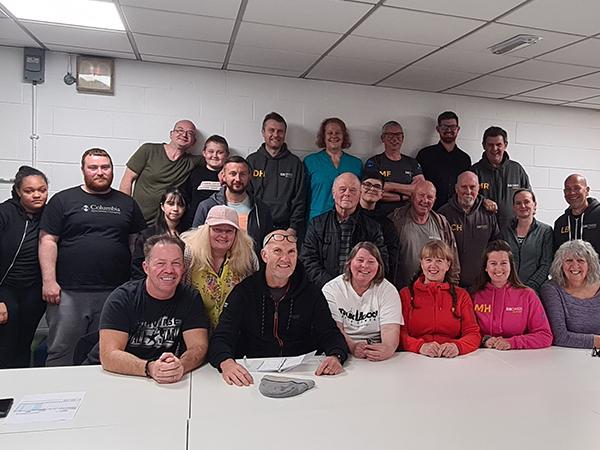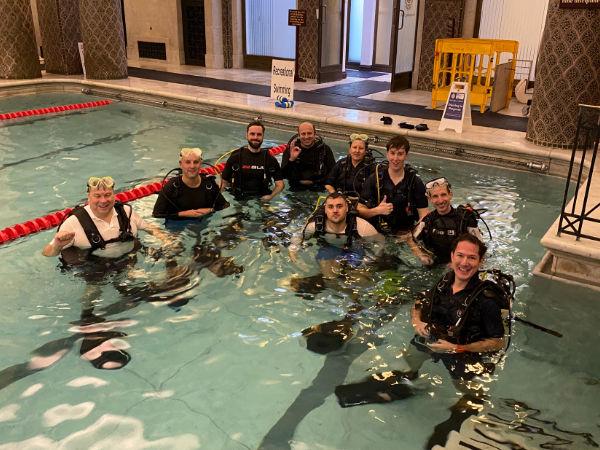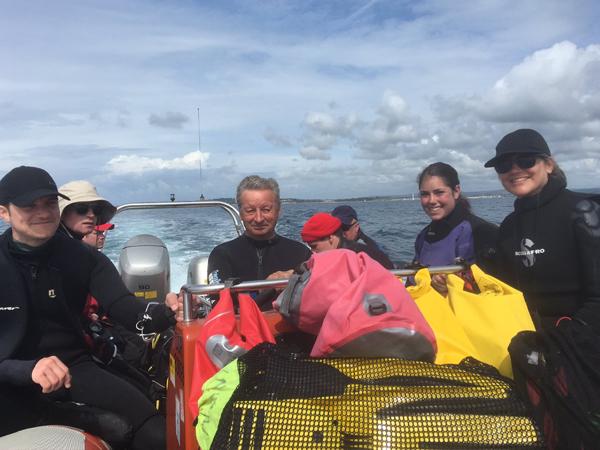So, your club is ready to welcome new members, the training plan and diving calendar is in place…all you need now is to get your message out to potential new members in your area. A well-timed and well-thought out press release to your local media is a great way to showcase your club within your local community.
We've compiled a top five tips checklist to help get your story covered by your local media (newspaper, radio and even local TV)...
Tip one: Research and build your media list
Think about all the media that cover your club's catchment area and then research and compile an up-to-date media contacts list. You can look online to get the relevant news editor’s contact details – either via their own website or from information resource Media UK or Local Media UK.
Try to get as much information as you can on each media contact. Eg. is it a daily or weekly publication, what is their print deadline, when are they published, what is their circulation and reader catchment area. Do they regularly cover club and community stories, do they include features – the more you know and understand about your target media, the better you can tailor your news to fit.
Consider contacting your local paper to find out more – a call timed so it doesn’t clash with a deadline and when they are more likely to be able to chat can reap rewards: you can explain who you are, what types of activities and potential stories you can offer and find out more about what they would be looking for.
Nurturing contacts is key – and so is establishing you and your club as a reliable source of stories. The more you can exceed the expectation of the journalist, the more likely they will work with you again.
Tip two: Establish a point of contact in your club
Ensure that whoever you quote as being your club’s point of contact in your news release is going to be available to answer media enquiries. Also, consider in advance who will be your spokesperson/s if asked – they need to be able to speak clearly and confidently, speak with authority on the press release’s subject matter as well diving with your club and can be available at short notice if needed.
Tip three: Writing your news release
Keep your news release sharp, upbeat and to the point – with a clear, engaging headline and an introductory paragraph that effectively summarises the story or call to action.
Your news release should then follow the Five Ws – the ‘what, who, when, where and why’ of your story. It should succinctly fill in all the details so include quotes and ‘people details’ to bring the story to life. A short background sentence on the club should also be worked in (but don’t get bogged down with too much unnecessary detail, you can supply that later if asked.)
Ensure you include within the body of the release contact details for your club and a call to action to potential members. Email and website is effective (make sure your website is up-to-date) and you can include a contact telephone number but as outlined in Tip Two, ensure there is someone available to promptly deal with all inquiries you may receive post publication.
At the end of your release include ‘For more information’ section so the journalist has someone to call if needed - ensure that whoever’s name and contact details are included will be immediately available. A Note to Editors at the end can also be used to add in additional background information to the story and/or your club.
Tip four: Enhance your story with photos and video
The more complete story you can provide the News Desk the better. Not only does it increase your chance of the story being taken up but it also shows you understand their particular needs and are a reliable source for the future.
For this, images are key. The media works on limited resources and tight timelines and so are not always willing and able to dispatch a photographer. Your news release is more likely to be taken seriously if it is accompanied by high quality ‘media friendly’ images that strengthen the story you are telling.
Have you got a few good quality (and file size of no less than 1MB) photographs that effectively illustrate your story? If not, do you have a good photographer in your club ranks who can be brought on board to take photos specifically for the news release?
Please ensure you have permission to distribute the images from the people in them, especially the parents/guardians of under 18s.
Don’t forget video! Even if you are sending in a release to a newspaper, if you have relevant video content, either topside or better still underwater, that helps to tell your story then make it available to the reporter. Video content is great for newspapers with online sites and is very easily shared, widening the reach of your story even further.
Tip five: Selling your story in
When sending your news release, email is the only way to go – with a clear title in the subject line and the news release pasted into the body of the email.
In the glut of emails that is now the typical working day, try to help the News Desk as much as possible – mark your email PRESS RELEASE, followed by a great subject headline.
Don’t bother attaching anything other than your photos – 2 or 3 of your best photos are fine. If you have more, let the reporter know at the end of your release in Notes to Editors.
Check all is in place then send. It’s here that your media list research will pay dividends and you will be able to effectively time the distribution of your release. Avoid sending the release right on their print deadline – it increases the chance of it being over-looked. However, don’t be afraid to put in a short, well-timed courtesy call to follow your release up and see if they are able to use the story and if they need anything else.
We're here to help...If you need any additional support or advice on working with your local media please contact us on 0151 350 6201 or by email.









